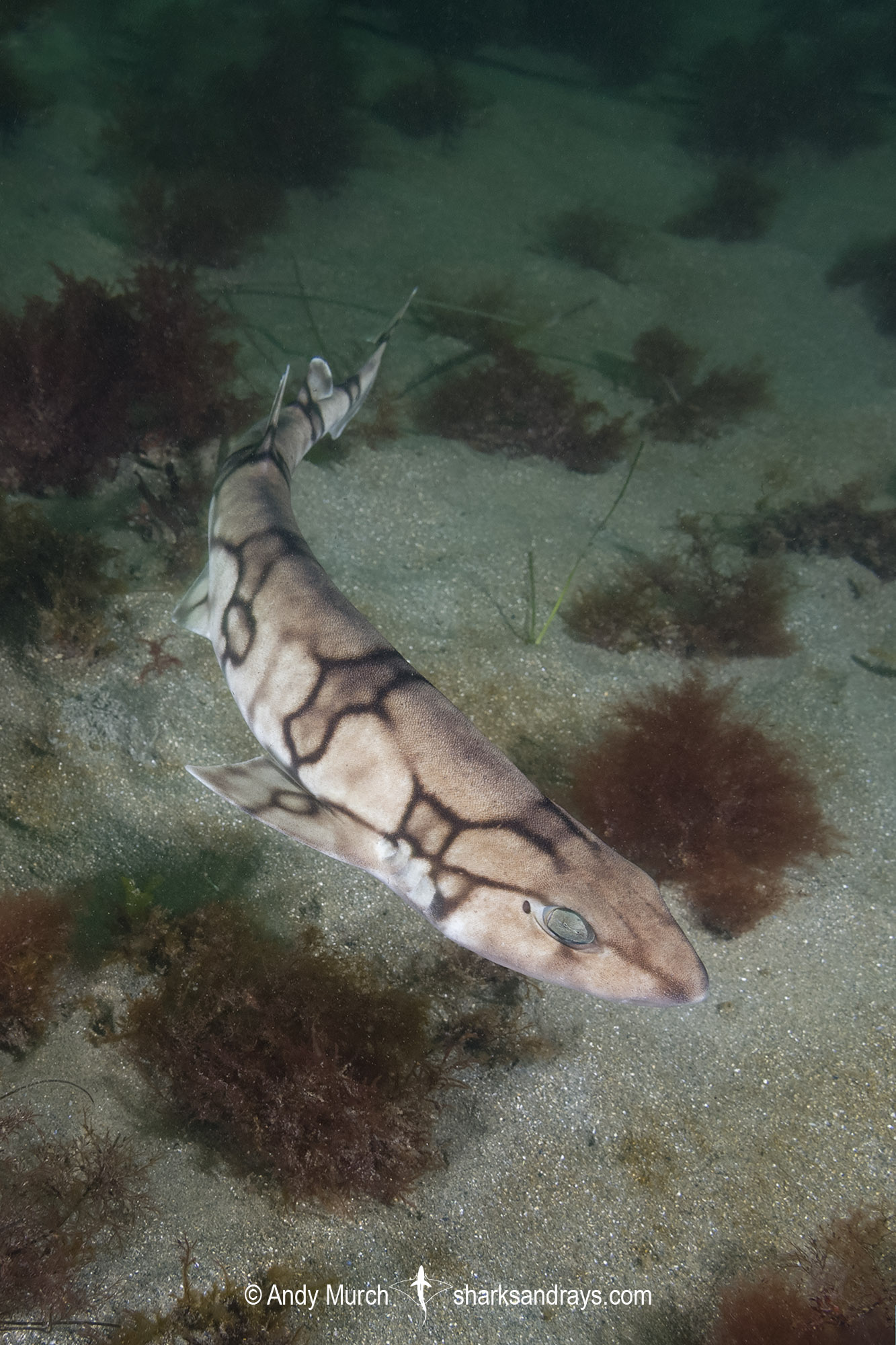Common name(s)
Chain Catshark, Chain Dogfish.
Identification
Slender body. Snout somewhat pointed with rounded tip. Snout length less than mouth width. First dorsal origin approximately level with pelvic fin free rear tip. First dorsal fin larger than second dorsal. Pectoral fins fairly large. Caudal fin posterior margin concave. Dorsal coloration predominantly beige with dusky saddles outlined by dark lines that branch into geometric patterns or chains. Line pattern may be indistinct.
Oddly, the skin of chain catshark glows under ultraviolet light. The purpose of this is a mystery but it may be a way to attract prey.
Size
Maximum size 58cm. Hatching size 10-11cm.
Habitat
Rocky, sandy or muddy substrates on outer continental shelf. Usually remains on bottom or close to it. Found between 73-754m.
Distribution
The chain catshark is present in the northwest Atlantic Ocean; from New England to Florida and the Gulf of Mexico. Isolated groups of chain catsharks are present in deeper reaches of the Caribbean Sea.
Conservation Status
LEAST CONCERN
The chain catshark is caught occasionally in bottom longline grouper/snapper fisheries and deep-water trawls. Juvenile S. retifer are caught as bycatch off the Mid-Atlantic Bight by trawls in waters deeper than 73 m. Adults are sometimes caught by trap and longline off South Carolina and Florida (Castro et al. 1988, Compagno, in prep. b). Individuals are collected for the aquarium trade.
Citations and References
Sherrill-Mix, S.A., Myers, R.A. & Burgess, G.H. 2006. Scyliorhinus retifer. The IUCN Red List of Threatened Species 2006: e.T60233A12331224. https://dx.doi.org/10.2305/IUCN.UK.2006.RLTS.T60233A12331224.en. Downloaded on 25 November 2020.
Reproduction
Oviparous. The chain catshark’s egg cases are laid in pairs every 8-15 days (figure based on study of captive animals). The female swims around the substrate monumentation such as coral until the egg capsule tendrils are securely fastened. 44 to 52 eggs may be laid during each breading season. Egg capsules are rectangular measuring 2.7cm x 6.5cm.
Diet
Consumes squid, small bony fishes, polychaete worms, and crustaceans.
Behavior
The chain dogfish rests on the substrate for much of the day. Possibly uses it’s ability to glow under ultraviolet light to attract squid that it might otherwise not be able to catch.
Known swallow pebbles, perhaps for ballast.
Reaction to divers
Easy to approach but only seen by technical divers.
Diving logistics
Although this species is confined to deep water, technical divers that visit the deep wrecks of Virginia and the Carolinas sometimes encounter chain catsharks resting on wrecks below the 80 meter mark.
Tech divers tend to be more interested in history than marine life, so there are few images of chain catsharks in the wild, but if their stories are to be believed, they sometimes see scores of catsharks laying side by side on a single wreck.
Similar species
Atlantic Sawtail Catshark Distinguished by less intricate markings including large blotches and saddles. Limited range from Spain to Northwest Africa, at depths between 330-790m.
African Sawtail Catshark Distinguished by blotchier flank markings and saddles. Range overlap from Morocco to Senegal. Found at depths between 159-720m.
The Shark Forum
Let’s talk about sharks






